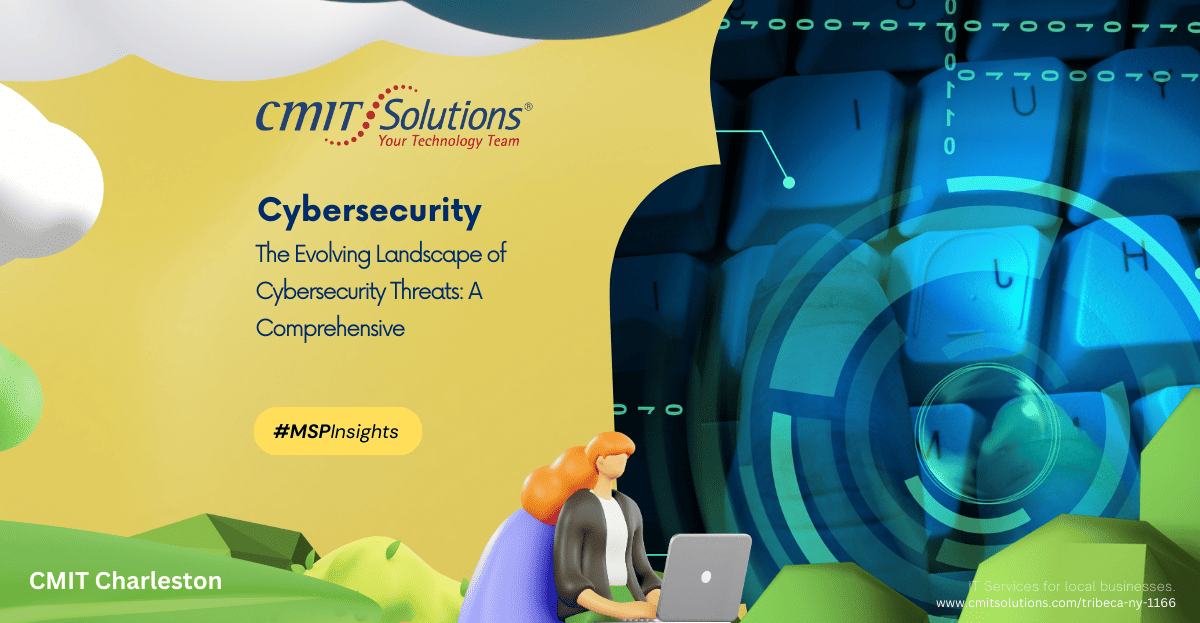In today’s interconnected digital world, cybersecurity has become a paramount concern for individuals, businesses, and governments alike. The rapid evolution of technology has ushered in a myriad of cyber threats, ranging from traditional malware to sophisticated nation-state cyber espionage. Understanding these threats and implementing robust security measures is crucial for safeguarding sensitive information and preserving digital trust. In this comprehensive overview, we delve into the various facets of cybersecurity threats, exploring their origins, impacts, and mitigation strategies.
Introduction to Cybersecurity Threats
The digital landscape is rife with potential vulnerabilities, making cybersecurity threats an omnipresent concern. From malicious software to targeted attacks, cyber threats encompass a wide array of tactics employed by threat actors to compromise systems, steal data, or disrupt operations. Understanding the nature of these threats is the first step towards building effective defense mechanisms.
Historical Perspectives: How Cyber Threats Have Evolved Over Time
The history of cybersecurity threats traces back to the early days of computing when viruses and worms proliferated through dial-up connections. Over the years, cyber threats have evolved in complexity and sophistication, reflecting advancements in technology and the changing motives of attackers. From the Morris Worm of 1988 to the recent SolarWinds supply chain attack, each incident has left an indelible mark on the cybersecurity landscape, shaping the way we perceive and mitigate risks.
Malware: The Persistent Menace
Malicious software, or malware, remains one of the most prevalent cybersecurity threats, encompassing a wide range of malicious programs designed to infiltrate, damage, or control computer systems. From Trojan horses to ransomware, malware poses a significant risk to individuals and organizations alike, often leading to data breaches, financial losses, and reputational damage.
Phishing Attacks: A Deceptive Weapon in the Cyber Arsenal
Phishing attacks represent a deceptive tactic used by cybercriminals to trick unsuspecting users into divulging sensitive information such as passwords, credit card numbers, or personal data. By impersonating legitimate entities through email, text messages, or social media, attackers exploit human psychology to gain unauthorized access to systems or steal valuable information.
Ransomware: The Growing Epidemic
Ransomware attacks have emerged as a pervasive threat, targeting businesses, government agencies, and individuals worldwide. By encrypting valuable data and demanding ransom payments for decryption keys, ransomware operators wreak havoc on victims’ systems, causing financial losses and operational disruptions. The exponential growth of ransomware attacks underscores the need for proactive defense measures and robust incident response strategies.
Insider Threats: Recognizing and Mitigating Internal Risks
While external threats often garner attention, insider threats pose a significant risk to organizations due to their proximity to sensitive information and systems. Whether intentional or inadvertent, insider threats can result in data breaches, intellectual property theft, or sabotage. Implementing strict access controls, conducting thorough background checks, and promoting a culture of cybersecurity awareness are essential steps in mitigating insider risks.
DDoS Attacks: Unleashing Digital Chaos
Distributed Denial of Service (DDoS) attacks leverage networks of compromised devices to overwhelm targeted systems or services, rendering them inaccessible to legitimate users. By flooding servers with an overwhelming volume of traffic, DDoS attackers disrupt online operations, causing financial losses and tarnishing reputations. Robust network defenses, including intrusion detection systems and traffic filtering mechanisms, are critical for mitigating the impact of DDoS attacks.
IoT Vulnerabilities: Bridging the Gap Between Convenience and Security
The proliferation of Internet of Things (IoT) devices has introduced new security challenges, as these interconnected devices often lack adequate safeguards against cyber threats. From smart home appliances to industrial control systems, IoT vulnerabilities can be exploited to launch attacks ranging from data breaches to physical infrastructure damage. Strengthening IoT security requires a multi-faceted approach, including device hardening, encryption, and regular security updates.
Social Engineering: Manipulating the Human Element
Social engineering tactics rely on psychological manipulation to deceive individuals into divulging confidential information or performing actions that compromise security. From pretexting to baiting, social engineers exploit human emotions such as trust, fear, and curiosity to achieve their objectives. Educating users about common social engineering techniques and promoting a culture of skepticism can help thwart these deceptive tactics.
Supply Chain Attacks: Exploiting Weak Links
Supply chain attacks target the interconnected network of suppliers, vendors, and partners that support an organization’s operations. By compromising trusted suppliers or injecting malicious code into software updates, attackers can infiltrate target networks with devastating consequences. Strengthening supply chain security requires rigorous vetting of third-party vendors, implementing secure development practices, and monitoring for suspicious activity.
Advanced Persistent Threats (APTs): The Stealthy Adversaries
Advanced Persistent Threats (APTs) are sophisticated cyber attacks orchestrated by well-funded and highly skilled threat actors, often with nation-state backing. Characterized by stealthy infiltration, long-term persistence, and targeted exfiltration of sensitive data, APTs pose a formidable challenge to organizations across various sectors. Detecting and mitigating APTs require advanced threat intelligence, continuous monitoring, and proactive threat hunting capabilities.
Cloud Security: Navigating Risks in the Digital Sky
The adoption of cloud computing has revolutionized the way organizations store, process, and access data. However, cloud environments also introduce unique security challenges, including data breaches, misconfigurations, and insider threats. Implementing robust identity and access management controls, encrypting sensitive data, and leveraging cloud-native security tools are essential for safeguarding cloud assets against cyber threats.
Identity Theft: Safeguarding Personal Information in an Interconnected World
Identity theft remains a prevalent cybercrime, with attackers targeting personal information for financial gain or fraudulent activities. From stolen credit card details to compromised social security numbers, the repercussions of identity theft can be far-reaching, affecting individuals’ financial stability and reputation. Employing strong authentication mechanisms, monitoring financial transactions, and staying vigilant against phishing attempts are crucial for mitigating the risk of identity theft.
Cyber Espionage: Nation-State Threats in the Digital Age
In the realm of geopolitics, cyber espionage has emerged as a potent tool for nation-states seeking to gain strategic advantage or undermine adversaries. From intellectual property theft to surveillance operations, state-sponsored cyber espionage activities pose significant risks to national security and economic interests. Enhancing cyber defenses, fostering international cooperation, and imposing diplomatic consequences are essential steps in deterring cyber espionage.
Zero-Day Exploits: Unveiling Vulnerabilities Before They’re Patched
Zero-day exploits refer to previously unknown vulnerabilities in software or hardware that are exploited by attackers before a patch or fix is available. These exploits can be leveraged to gain unauthorized access, escalate privileges, or execute malicious code, posing a significant risk to organizations worldwide. Implementing robust vulnerability management processes, deploying intrusion detection systems, and fostering responsible disclosure practices are essential for mitigating the impact of zero-day exploits.
Mobile Security: Protecting Devices on the Go
With the proliferation of smartphones and tablets, mobile devices have become an integral part of everyday life. However, mobile security remains a pressing concern, as these devices are often targeted by malware, phishing attacks, and data breaches. Implementing mobile device management solutions, enforcing strong encryption, and educating users about mobile security best practices are essential for safeguarding sensitive information on the go.
Blockchain Security: Strengthening the Foundations of Digital Trust
Blockchain technology holds promise for revolutionizing various industries by providing immutable, transparent, and decentralized transaction records. However, ensuring the security and integrity of blockchain networks is paramount to realizing its full potential. From securing private keys to implementing consensus mechanisms, robust blockchain security measures are essential for building trust in digital transactions and preventing fraud or tampering.
Data Breaches: Lessons Learned and Preventative Measures
Data breaches represent a significant threat to organizations, resulting in financial losses, reputational damage, and regulatory penalties. Whether due to cyber attacks, insider threats, or accidental disclosures, data breaches highlight the importance of implementing robust security controls and incident response plans. Conducting regular security assessments, encrypting sensitive data, and promptly notifying affected individuals are essential steps in mitigating the impact of data breaches.
Compliance and Regulatory Challenges in Cybersecurity
As cyber threats continue to evolve, regulatory requirements and compliance standards play a crucial role in shaping organizations’ cybersecurity practices. From GDPR to HIPAA, regulatory frameworks impose stringent requirements for protecting sensitive data, ensuring transparency, and reporting security incidents. Navigating the complex landscape of compliance mandates requires a proactive approach, including risk assessments, policy development, and ongoing compliance monitoring.
Conclusion: The Imperative for Continuous Vigilance and Adaptation in the Face of Evolving Cyber Threats
In conclusion, the landscape of cybersecurity threats is constantly evolving, presenting new challenges and risks for individuals, businesses, and governments. By understanding the nature of cyber threats, implementing robust security measures, and fostering a culture of vigilance and adaptation, organizations can mitigate the impact of cyber attacks and safeguard their digital assets. As technology continues to advance, staying ahead of cyber threats requires a collaborative effort, collective responsibility, and unwavering commitment to cybersecurity best practices. Together, we can navigate the evolving cybersecurity landscape and build a more secure digital future.




